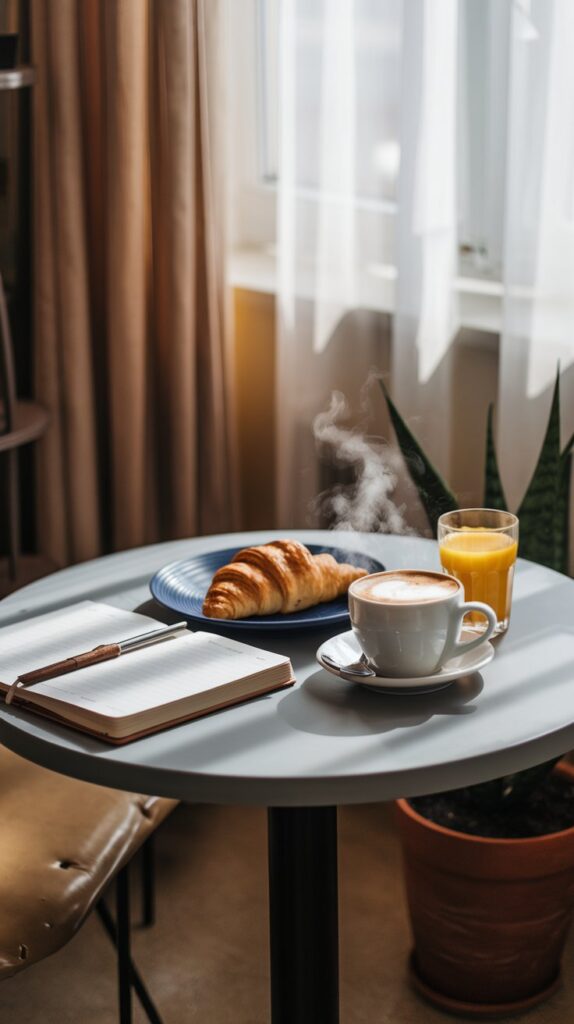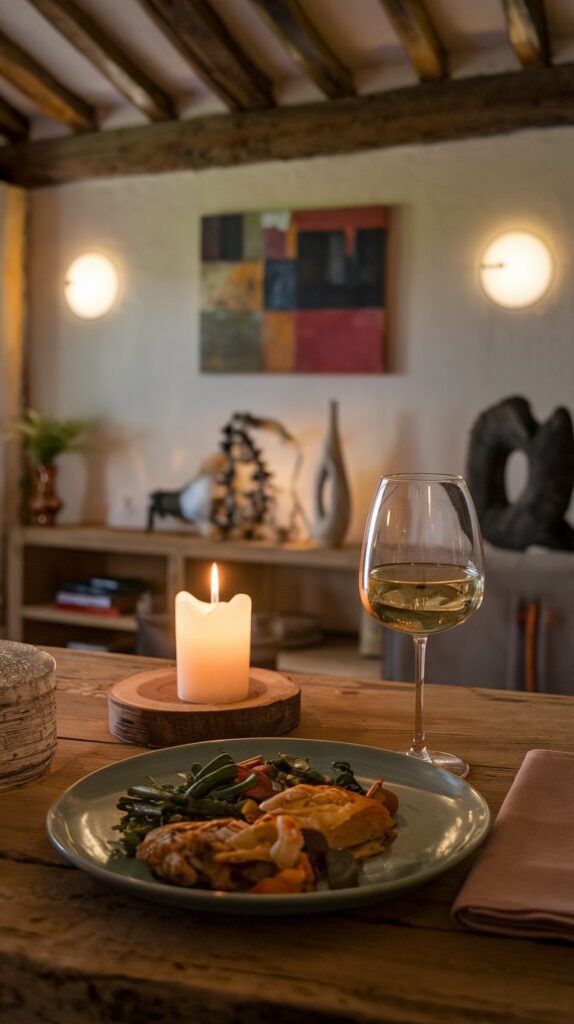
Have you ever felt like your life is a never-ending race you didn’t sign up for? I have. A few years ago, my days were a blur of back-to-back commitments, a mountain of responsibilities, and the constant ping of notifications. Life felt overwhelming, and I barely had time to breathe, let alone enjoy the little things.
Then, I discovered slow living. It wasn’t an overnight transformation, but gradually, I started to simplify, declutter, and focus on what truly matters. Today, I feel more present, fulfilled, and connected to my life than ever before. If you’re ready to stop running on autopilot and start living intentionally, here are the steps that helped me, along with the amazing benefits you’ll gain from embracing slow living.
Step 1: Simplify Your Environment
The first step in slow living is creating a space that supports it. A cluttered home mirrors a cluttered mind. When your environment feels chaotic, it can be challenging to find peace within yourself. By simplifying your surroundings, you create an atmosphere that nurtures calm and focus.
How to Do It:
- Declutter Ruthlessly: Go room by room, tackling one area at a time. Start small if it feels overwhelming. Ask yourself, “Does this add value to my life?” If not, donate, recycle, or toss it. Don’t hold onto items out of guilt—let them go to someone who can truly use them.
- Create a Sanctuary: Dedicate at least one space in your home for relaxation, whether it’s a reading nook, a meditation corner, or a tidy desk. This can become your go-to spot for unwinding and reconnecting with yourself.
- Adopt Minimalist Storage Solutions: Use functional and beautiful storage options like woven baskets, stackable bins, or multi-functional furniture to organize your space effectively. Focus on quality over quantity.
- Maintain It: Decluttering isn’t a one-time event. Spend a few minutes each day tidying up. A quick reset at the end of the day can prevent clutter from building back up and keep your environment serene.
Picture This:
Imagine walking into your living room and seeing sunlight pouring onto a tidy couch adorned with a simple, soft blanket. A single shelf displays meaningful items: a framed photo, a small plant, and a favorite book. The air smells faintly of lavender from a diffuser, and you feel instantly at ease.
Step 2: Prioritize What Truly Matters

Slow living isn’t about doing less; it’s about doing what matters most. In a world that glorifies busyness, it can be easy to confuse being busy with being productive. By identifying your core values and focusing on them, you ensure that your energy goes toward what truly enriches your life.
How to Do It:
- Reflect on Your Values: Take some quiet time to think about what brings you joy, purpose, and fulfillment. Write these down and revisit them often to keep them front and center in your life.
- Set Boundaries: Boundaries are essential to slow living. Learn to say no to commitments that don’t align with your values or stretch you too thin. It’s okay to prioritize yourself and your well-being.
- Create a “Big Three”: Identify three key areas—such as family, personal growth, and health—that you want to dedicate your time and energy to. Let these guide your daily decisions and ensure your actions align with your goals.
- Audit Your Schedule: Look at how you’re spending your time. If your schedule is packed with activities or obligations that don’t align with your values, start making changes. Simplify your calendar to make room for the things that matter most.
Picture This:
You wake up on a Saturday morning with a sense of calm. Instead of rushing out the door, you’ve planned a day filled with what matters: a morning hike with your partner, an afternoon painting session, and a quiet evening reading a book with tea in hand.
Step 3: Embrace Intentional Routines

Intentional routines are the backbone of slow living. They bring structure and peace to your days, helping you approach life with clarity and purpose. Instead of rushing through your tasks, intentional routines allow you to engage with your activities mindfully, creating a sense of rhythm and harmony.
How to Do It:
- Morning Rituals: Start your day with mindfulness. Whether it’s stretching, journaling, or savoring a cup of coffee, choose activities that set a positive tone for your day. Avoid diving straight into your phone or emails.
- Evening Wind-Down: End your day intentionally. Spend 20-30 minutes reflecting on what you’re grateful for, reading a calming book, or meditating. This practice helps you transition to a restful night.
- Limit Screen Time: Screens can be a major source of distraction. Establish screen-free zones or times, such as during meals or the hour before bed, to encourage deeper connections and better sleep.
- Batch Your Tasks: Group similar activities together—like meal prepping or answering emails—to save time and energy. This approach reduces the mental load of constantly switching between tasks.
Picture This:
You start your day with a peaceful stretch, followed by savoring your morning coffee in a ceramic mug you love. Birds chirp outside, and the day ahead feels less daunting because you’ve carved out this time just for you.
Step 4: Connect with Nature

Nature has an incredible way of grounding us and reminding us to slow down. Reconnecting with the natural world doesn’t just provide a mental reset; it also improves physical health, boosts creativity, and nurtures a sense of wonder.
How to Do It:
- Take Daily Walks: Even a 10-minute stroll outside can refresh your mind and body. Pay attention to the sights, sounds, and smells around you.
- Bring Nature Indoors: Incorporate plants, fresh flowers, or natural elements like wooden decor into your home. These touches bring a sense of calm and vitality to your space.
- Unplug Outdoors: When spending time in nature, leave your phone behind or put it on airplane mode. Engage fully with your surroundings—watch the clouds, listen to birds, and feel the breeze.
- Try Gardening: Whether it’s growing herbs on a windowsill or cultivating a backyard garden, nurturing plants can be deeply rewarding and meditative.
Picture This:
You’re sitting on a park bench surrounded by trees, watching leaves dance in the wind. The sun warms your skin, and for the first time all day, you feel truly present and alive.
Step 5: Savor Simple Pleasures

Slow living is about appreciating the little things—the moments we often overlook in the hustle and bustle. By learning to savor these simple pleasures, you cultivate a deep sense of gratitude and contentment.
How to Do It:
- Be Present: Instead of multitasking, focus fully on what you’re doing. Savor your meals, enjoy a conversation, or take time to notice the small details in your surroundings.
- Celebrate Rituals: Turn ordinary moments into something special—light a candle at dinner, brew your favorite tea, or enjoy a soothing bath with aromatic oils.
- Practice Gratitude: Make it a habit to write down three things you’re grateful for every day. This simple practice can shift your mindset and help you find joy in everyday life.
- Find Joy in Everyday Tasks: Approach mundane chores like cooking or cleaning with mindfulness and gratitude. Focus on the process and the satisfaction of a job well done.
Picture This:
You light a candle and sit down to a simple dinner you cooked yourself. As you take a bite, you close your eyes to savor the flavors. The warm glow of the candle flickers, and you feel immense gratitude for this peaceful moment.
The Benefits of Slow Living
1. Reduced Stress:
Simplifying your life and focusing on what matters lowers stress and helps you feel more in control.
2. Stronger Relationships:
When you prioritize quality time with loved ones, your connections deepen.
3. Better Health:
Intentional living often leads to healthier habits, like cooking at home, moving your body, and getting enough sleep.
4. Increased Joy:
By slowing down, you learn to appreciate the beauty in everyday life—from a blooming flower to a shared laugh.
5. Enhanced Creativity:
A slower pace gives your mind space to wander, fostering creativity and problem-solving.
Your Slow Living Journey Starts Today
If you’ve ever felt like life is moving too fast, I promise you this: slowing down isn’t just possible—it’s transformative. Start small. Declutter one room, carve out a morning ritual, or take a walk in nature. Little by little, you’ll create a life filled with intention, peace, and joy.
What’s your first step toward slow living? Share your thoughts in the comments below—I’d love to hear from you!
